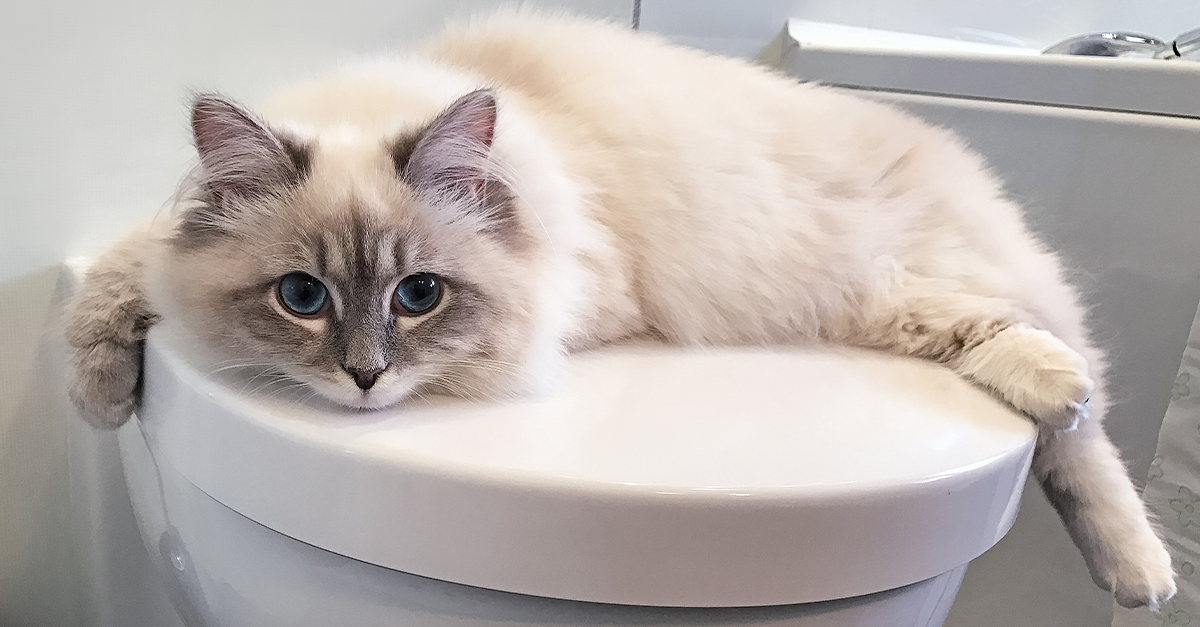Potential Risks of Flushing Cat Poop Down Your Toilet - Advice for Better Handling
Potential Risks of Flushing Cat Poop Down Your Toilet - Advice for Better Handling
Blog Article
What are your opinions on Don’t flush cat feces down the toilet?

Intro
As cat owners, it's essential to bear in mind exactly how we dispose of our feline good friends' waste. While it might appear hassle-free to flush pet cat poop down the toilet, this practice can have damaging effects for both the setting and human health.
Alternatives to Flushing
Thankfully, there are safer and more liable ways to deal with feline poop. Take into consideration the adhering to choices:
1. Scoop and Dispose in Trash
One of the most typical technique of disposing of feline poop is to scoop it into an eco-friendly bag and toss it in the trash. Make sure to utilize a committed clutter inside story and dispose of the waste without delay.
2. Usage Biodegradable Litter
Opt for naturally degradable feline trash made from materials such as corn or wheat. These litters are environmentally friendly and can be safely dealt with in the trash.
3. Bury in the Yard
If you have a yard, consider burying pet cat waste in a marked location away from veggie yards and water resources. Make sure to dig deep sufficient to avoid contamination of groundwater.
4. Install a Pet Waste Disposal System
Invest in an animal garbage disposal system particularly designed for cat waste. These systems use enzymes to break down the waste, lowering smell and ecological effect.
Health Risks
Along with ecological concerns, flushing cat waste can also position health risks to human beings. Feline feces may contain Toxoplasma gondii, a bloodsucker that can trigger toxoplasmosis-- a possibly extreme disease, especially for expectant women and individuals with damaged immune systems.
Environmental Impact
Purging feline poop introduces dangerous microorganisms and parasites into the water supply, posturing a significant threat to water ecosystems. These pollutants can negatively affect aquatic life and concession water quality.
Final thought
Liable family pet ownership prolongs beyond supplying food and sanctuary-- it additionally includes proper waste monitoring. By refraining from purging cat poop down the commode and choosing different disposal methods, we can decrease our environmental impact and shield human health.
Why Can’t I Flush Cat Poop?
It Spreads a Parasite
Cats are frequently infected with a parasite called toxoplasma gondii. The parasite causes an infection called toxoplasmosis. It is usually harmless to cats. The parasite only uses cat poop as a host for its eggs. Otherwise, the cat’s immune system usually keeps the infection at low enough levels to maintain its own health. But it does not stop the develop of eggs. These eggs are tiny and surprisingly tough. They may survive for a year before they begin to grow. But that’s the problem.
Our wastewater system is not designed to deal with toxoplasmosis eggs. Instead, most eggs will flush from your toilet into sewers and wastewater management plants. After the sewage is treated for many other harmful things in it, it is typically released into local rivers, lakes, or oceans. Here, the toxoplasmosis eggs can find new hosts, including starfish, crabs, otters, and many other wildlife. For many, this is a significant risk to their health. Toxoplasmosis can also end up infecting water sources that are important for agriculture, which means our deer, pigs, and sheep can get infected too.
Is There Risk to Humans?
There can be a risk to human life from flushing cat poop down the toilet. If you do so, the parasites from your cat’s poop can end up in shellfish, game animals, or livestock. If this meat is then served raw or undercooked, the people who eat it can get sick.
In fact, according to the CDC, 40 million people in the United States are infected with toxoplasma gondii. They get it from exposure to infected seafood, or from some kind of cat poop contamination, like drinking from a stream that is contaminated or touching anything that has come into contact with cat poop. That includes just cleaning a cat litter box.
Most people who get infected with these parasites will not develop any symptoms. However, for pregnant women or for those with compromised immune systems, the parasite can cause severe health problems.
How to Handle Cat Poop
The best way to handle cat poop is actually to clean the box more often. The eggs that the parasite sheds will not become active until one to five days after the cat poops. That means that if you clean daily, you’re much less likely to come into direct contact with infectious eggs.
That said, always dispose of cat poop in the garbage and not down the toilet. Wash your hands before and after you clean the litter box, and bring the bag of poop right outside to your garbage bins.
https://trenchlesssolutionsusa.com/why-cant-i-flush-cat-poop/

Hopefully you enjoyed reading our part on Can You Flush Cat Poo or Litter Down the Toilet?. Thank you so much for taking a few minutes to read through our posting. If you enjoyed reading our page plz do not forget to pass it around. I thank you for reading our article about Can You Flush Cat Poop Down The Toilet?.
Go Deal Now Report this page